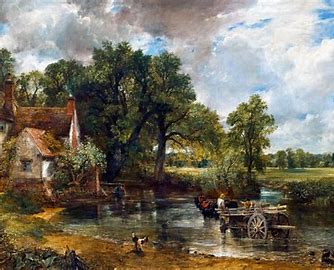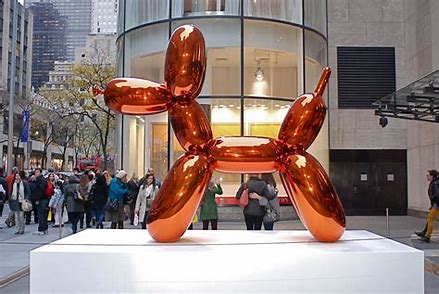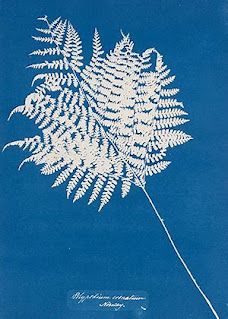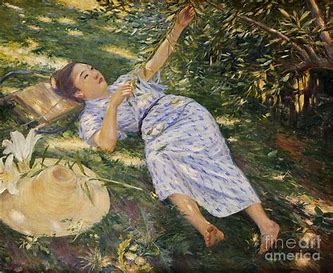Classical Blog Exhibit
In my classical exhibit blog, I would like to introduce you to three extraordinary artists who exquisitely synthesized art and science.
The first artist in my exhibition is John Constable (1776-1837) and his landscape, The Hay Wain. The landscape was painted in 1821 oil on canvas in a London studio and has measurements of 130.2x185.4 cm and is attributed to the romantic style of painting. It is currently housed in the National Gallery of London, UK. "The Hay Wain is an idyllic image of a summer day in the artist’s beloved Suffolk countryside. First shown to the public in 1821, the landscape became the third in a series of so-called "six-footers", the canvases that Constable painted for exhibitions at the Royal Academy of Arts."(The Hay Wain, n.d.) John Constable grew up along the Stour River in East Bergholt, Suffolk. The impressions of the idyllic countryside can be found in his landscape paintings, which are closely related to the Stour Valley area, which is sometimes referred to as Constable country. "Constable's most explicit statement of his scientific approach to landscape painting was made in his last public lecture, delivered at the Royal Institution of Great Britain in 1836 "Painting is a science, and should be pursued as an inquiry into the laws of nature. Why, then, may not landscape painting be considered as a branch of natural philosophy, of which pictures are but the experiment's?""(Rees, 1976) John Constable immortalized the Suffolk landscape and pioneered Naturalism in Britain.
The second artist in my exhibition is Johns James Audubon (1785-1851), and the illustrations of his most famous work, The Birds of America (1827-1839). "Part artist, part naturalist, and part ornithologist, Audubon is well-known for his prolific work documenting and illustrating American birds. His most famous work, The Birds of America (1827-1839), still stands the test of time as one of the most complete and intricate ornithological works ever compiled."(Realism of John James Prints, 2020)
Although all of James Audubon's illustrations are magnificent for my exhibit, I chose his illustration of Long-Billed Curlew, Plate 231 aquatint engraving with original hand color. The copper plate engravings measure about 30x40 inches, and Havell published the first edition on watermarked woven paper. "Birds of America is considered to be one of the most expensive books ever offered at auction. In June of 2018, Christie’s New York sold the complete four-volume Birds of America in excellent condition for $9,650,000, proving how relevant John James Audubon art prints still are today."(Realism of John James Prints, 2020) There were fewer than 200 full sets of color plates produced. Today, there are approximately 120 complete copies known to exist, and Yale University owns two of them. The book The Birds of America documented 435 species of American birds in life-size prints, making it a valuable contribution to natural history and scientific observation. Each illustration was printed from an etched copper plate, and each print was then hand colored with watercolor paint.
Audubon was born in Saint-Dominique(Haiti) in 1785 to a French naval officer and his Creole mistress. He was raised in France by his father's wife. After Audubon's bankruptcy in 1819, he began his mission to paint America's birds, spending several years hunting and drawing birds along the Mississippi River. The 435 plates depict 1055 birds. Each plate tells an artistic story in vivid colors and elaborate details. Some of his illustrations depict dramatic stories that received criticism at that time. The backgrounds of the plates were highly artistic, which was unique at this time.
The illustration of the Long-Billed Curlew depicts a bird in its natural habitat, the marshlands, with a detailed background of historic Charleston harbor. The illustration's composition is L-shaped, with dark, vivid colors in the foreground and light pastel colors in the background. The birds are depicted in great detail in life-like poses. The illustrations offered the viewer an unforgettable experience. They depicted birds, provided their natural habitat as a background, and even displayed their inherent postures.
The third artist in my exhibition is Maria Sibylla Merian(1647-1715) and her illustration of pomegranate with a butterfly's life cycle, plate 9 from Insects of Suriname, 1726 edition. Maria Sibylla Merian was a German artist, scientific illustrator, naturalist, and adventurer. "Merian was born on 2 April 1647 in Frankfurt, Germany, into a family of printers and engravers. When she was three, her father, Matthäus Merian the Elder, passed away. Her mother, Johanna Catharina Sibylla, then married the artist Jacob Marrel, known for his highly fashionable flower pieces. Growing up in Marrel's studio, Merian became highly skilled with watercolours and learned to prepare pigments and copper plates for printing."(Lotzof, n.d.)
At age 13, Maria discovered a lifelong fascination with insects and, especially, with the process of Metamorphosis. "At a time when insects were believed to spring forth magically from mud, waste and plant matter in a process known as 'spontaneous generation', Merian was one of the first to closely observe and record the process of insect metamorphosis."(Lotzof, n.d.) She has published several scientific books, creating illustrations and sharing her observations with the entomological community. Throughout her life, Maria established herself as an entomologist and an unparalleled gifted artist. Today, she is thought of as one of the most prolific scientists of the Enlightenment.
In 1699, the city of Amsterdam, Netherlands, subsidized Marian's trip to Surinam, which is now known as French, Dutch, and British Guianas, for the duration of two years. Following her trip to Surinam, she created 60 copper plate engravings to illustrate the stages of insect development that are always artistically arranged around foreign that she discovered. Her book Metamorphosis Insectorum Surinamensium was published in 1705 and was the first work of the natural history of Surinam. Purchasers could buy the book with colored or uncolored plates as well as a luxury version of the illustrations from Metamorphosis. Merian made at least two sets of these luxury Suriname illustrations. The Frankfurt patrician Conrad Zacharias Offenbach wrote in his diary that a hand-colored copy could be purchased from Marian for 45 Florins (approx $1200 in 2015). Because of all possible varieties, none of the copies look the same. Approximately 70 copies of this book are known to exist today. One of the known sets is at the British Museum in London, UK.

Pomegranate with a butterfly's life cycle, plate 9 from Insects of Suriname, 1726 edition, is a watercolor painting over etched outlines on a vellum 37.2x30.2 cm (vellum sheet). It depicts a branch of pomegranate with the Menelaus Blue Morpho butterfly (Morpho menelaus) and the caterpillar of the Banded Sphinx moth (Eumorpha fasciata). The illustration has a diagonal composition that guides the viewer's eye from the left corner, where the blue butterfly is pictured with open wings, and then descends into the illustration of the same butterfly with closed wings, arriving at the caterpillar form and finally descending to the pupae form that rests in the cupped opening of the pomegranate. Marian used radiant colors for the pomegranate tree blossoms, pomegranate arils, and the sapphire blue butterfly wings. The illustration is highly realistic and allows the public to participate in the breathtaking beauty of the Surinam tropical fauna and flora. Maria Sibylla Merian was able to connect science and art in the most beautiful and groundbreaking way. She built a bridge between entomology and botany, between insects and art that connects the public across generations and time.
Resouces cited
Lotzof, Kerry. “Maria Sibylla Merian: Metamorphosis Unmasked by Art and Science.” Natural History Museum, www.nhm.ac.uk/discover/maria-sibylla-merian-metamorphosis-art-and-science.html. Accessed 11 Mar. 2024.
Rees, Ronald. “John Constable and the Art of Geography.” Geographical Review, vol. 66, no. 1, 1976, pp. 59–72. JSTOR, https://doi.org/10.2307/213315. Accessed 11 Mar. 2024.
“The Hay Wain.” Arthive, arthive.com/johnconstable/works/386532~The_Hay_Wain. Accessed 10 Mar. 2024.
“The Majestic Realism of John James Audubon Prints.” Invaluable, 20 Aug. 2020, www.invaluable.com/blog/john-james-audubon/. Accessed 11 Mar. 2024





Hi Chris. I really enjoyed reading your post and the reasons behind each of the three paintings. I especially liked "Pomegranate with a butterfly's life cycle", it's not only beautifully made, but also the details put in this painting, even to the smallest, is amazing. The colors are so bright but at the same time very soft to look at. Although I see everything in the painting, the first thing that caught my eyes was the blue butterfly with its cool color surrounded by warm colors.
ReplyDeleteHello Chris,
ReplyDeleteI really like the Hay Wain as I have a soft spot for country landscapes. The painting is rich in color, and there are many details in it. The lower part of the painting is difficult to make out the detail as the colors are very dark. I wonder if the landscape was really that dark? I wish it was a little lighter so you can see more.
I liked the painting of the birds in their natural habitat as well. I think anyone who has spent time gazing that the migration of birds at Creamer's Field would appreciate it and wonder if they are stopping to rest during a long journey north or south. The setting is peaceful. One has to wonder if their long bills they are able to dig deep into the earth to find tasty worms or bugs to feast on?
The last one showing the process of Metamorphosis is beautiful! I like that it shows each stage of the process, the intricate detail of the butterfly wings, and of pomegranate broken open revealing the beautiful red seeds which matches the flowers.
Great job finding three pieces of art that relate to science in three different ways. I really like Long-Billed Curlew because its printed from an etched copper plate, which seems like a really unique medium to me.
ReplyDeleteChris, the Hay Wain painting by Constable is so pretty. The colors are great and the murky looking water gives it a bit of mystery. No disrespect to Constable but these types of paintings remind me of something Bob Ross would paint on his shows.
ReplyDeleteLong billed Curlew is not my cup of tea as far as illustrations go. I wish the CHarleston Harbor depicted in the background was bigger. I know the birds are supposed to be the centerpiece of the illustration but I feel a bigger harbor would really make the birds and marshland pop some more.
Butterflies' life cycle is a great painting. The color draws me straight in and the metamorphosis depicted in the painting is great. The darker colors for the caterpillar and a small butterfly and then a beautiful blue butterfly matured. Great painting. You did a great job picking art that depicts art and science . Great work.
Hey Chris!
ReplyDeleteI'd also chosen to cover The Hay Wain in my blog, as it really stood out to me as being a simple and relaxed. It's impressive how Constable is able to really put you in the environment where you can almost feel the of cool, relaxing water which blends with the shade of the trees to provide a respite from the summer heat that the commoners are experiencing. I think all the paintings you'd covered share that sense of simplicity, though the way you go into detail about what emotions the pieces elicit do them some real justice. I think that I liked your take on "The Hay Wain" the most, followed second by "Pomegranate and Menelaus Blue Morpho Butterfly". Even the simpler "Birds of America" has some striking details (mainly in the background) which I hadn't noticed or appreciated until you touched on it. Great work overall!